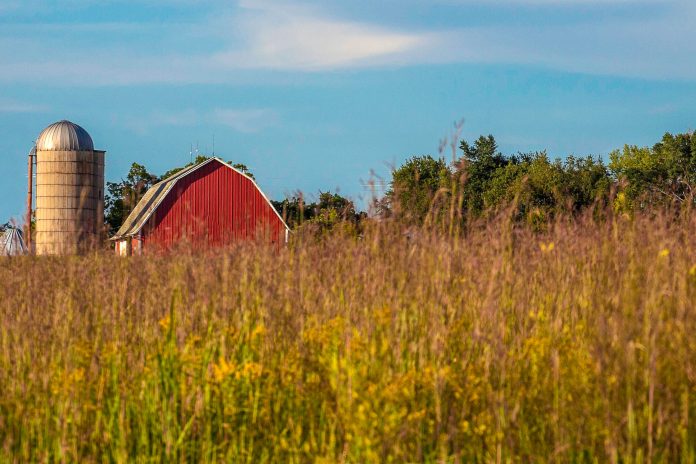Many rural areas in the United States are continuing to lose population, while many urban and suburban areas are gaining, according to more details of the 2020 Census results, released Aug. 12. With declining rural populations, farm groups in some states have expressed concerns about agricultural labor and reiterated a need for immigration reform.
Ohio and Pennsylvania aren’t major states for livestock processing, and many Ohio farmers, in particular, are growing row crops, which doesn’t require a lot of workers compared to crops like fruits and vegetables. But there’s still a need for workers in agribusiness and on farms that grow specialty crops or raise livestock.
Population
In Ohio, rural counties in Appalachia and the northwest, in particular, saw some population loss. That follows patterns that have held since farming areas started to lose population around 1930 in Ohio, and since outmigration in Appalachian areas started in the 1950s, said Mark Partridge, Swank Chair in Rural-Urban Policy at Ohio State University.
A few cities in Ohio, including Cleveland, Youngstown and Akron, also lost population. That’s also been a pattern since manufacturing in the area started to decline decades ago.
“It’s been happening for decades,” Partridge told Farm and Dairy. “People move to economic opportunities.”
Columbus and Cincinnati both saw growth. Cities that grew tended to be the ones that were successful at attracting immigrants, he said.
Much of both states saw increases in Hispanic and Latino populations. The current census data doesn’t show details on immigration, but some of those increases could be coming from immigration.
“There is a large immigrant population in rural areas, especially where there’s lots of food processing or agriculture,” Partridge said.
Ag labor
Ohio’s livestock processing sector isn’t as big as some states, but fruit and vegetable operations and dairy farms sometimes rely on immigrants for farm labor, said Joe Logan, president of the Ohio Farmers Union.
Pennsylvania has a lot of specialty crops that require field laborers for harvest season, like vegetables and fruit, said Liam Migdail, communications director for Pennsylvania Farm Bureau. Other products the state is known for, including dairy and mushrooms, aren’t even addressed in current visa programs for agriculture.
“Mushroom production is very labor intensive, and it’s year round,” Migdail said. “Visa programs are based on seasonal work.”
Agribusiness
There are also jobs to fill in agribusiness and sectors that surround and support agriculture, said Brandon Kern, senior director of state and national policy for Ohio Farm Bureau. An Ohio Farm Bureau Foundation study predicts the state will need to add 470,000 more jobs in agribusiness over the next decades — that includes people in engineering, law, real estate, transportation and logistics and other sectors, in addition to farm managers, he said.
“There’s a significant need now, and then a growing need in the future,” Kern said. “In a state like Ohio, losing population in some of these rural areas, it is going to be a challenge, for sure.”
Encouraging young people to go into agriculture and expanding broadband in rural areas — both to make those areas more attractive places to live and to help rural businesses compete — are two things that could help, Kern said.
Reform
But when it comes to on-farm jobs, it’s not just about the number of people in rural areas.
“These are jobs that are hard to attract people to,” Migdail said. “That’s why visa programs have been … part of filling the labor gap.”
But there are still challenges that come with those programs. Pressure on immigrants in the last presidential administration, in particular, and the pandemic have both been major challenges for agricultural workforces, Logan said.
“There’s a lot of problems with our labor situation, and a lot of that has to do with our immigration policy,” he said.
Many farm groups have advocated for immigration and visa program reforms for years. The Farm Workforce Modernization Act, which passed the U.S. House in March, would reform the H-2A visa program, a seasonal, agricultural visa program, to create pathways to legal status for farm workers and add year-round visas for the first time.
Migdail said while the farm bureau sees some of the things they’re looking for in the bill, like the year-round visas, the group isn’t supportive of it because of concerns about things like caps on the number of visas allowed through that program, and other provisions the group believes add barriers for farmers using the program.
Other farm groups, including the National Farmers Union, United Fresh Produce Association, National Milk Producers Federation and United Farm Workers have supported the bill.
“There’s not too many issues that all farm groups agree on,” Logan said. “Almost all farm groups agree we should open [the H-2A program] up and make it more friendly … one thing to make it more attractive is the prospect of having a pathway to citizenship, or at least a pathway to being a documented worker.”
Attractive
Michael Kovach, vice president of the Pennsylvania Farmers Union, believes there’s also room to make farming and agricultural jobs more attractive.
He views farming as noble work, and the pandemic only solidified that for him, but he rarely hears farmers talk about it that way unless they’re in an argument about why they farm in a particular way or use a particular practice.
“I think, as tall an order as it is, we have to figure out how to make those jobs less un-sexy,” Kovach said. “It’s not for everybody … but there’s something also very nice about knowing that you’re an integral member of society when a common crisis hits.”










